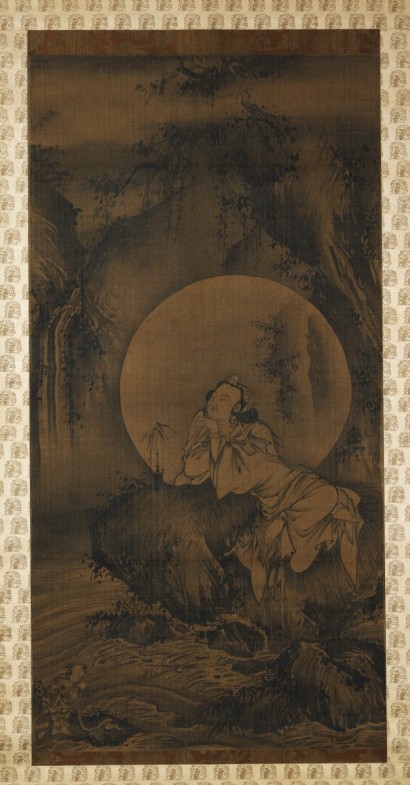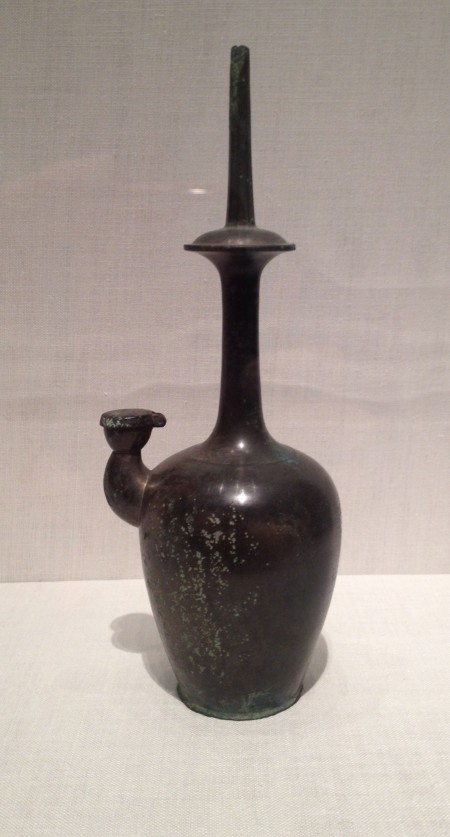Japan, Muromachi period, late 14th century; hanging scroll, ink on silk; image: 37 15/16 x 19 3/8 in., mount: 73 1/4 x 23 15/16 in.; Princeton University Art Museum, Gift of Duane Wilder, Class of 1951, y1992-6, photo: Bruce M. White, Courtesy of Princeton University Art Museum/Art Resource, NY.
Bottle (Kundika)
Korea, Goryeo dynasty, 10th century; bronze; H. 13 1/2 in.; The Metropolitan Museum of Art, Rogers Fund, 1923, 23.155, photo: www.metmuseum.org.
The spouted bottle seen here descends from Indian ritual practice. Known in Sanskrit as a kundika, this vessel was transmitted to East Asia and often appears in paintings as one of Avalokiteshvara’s attributes. Seen next to Kannon in the painting on the left, it holds a willow branch, symbol of the bodhisattva’s healing power.





